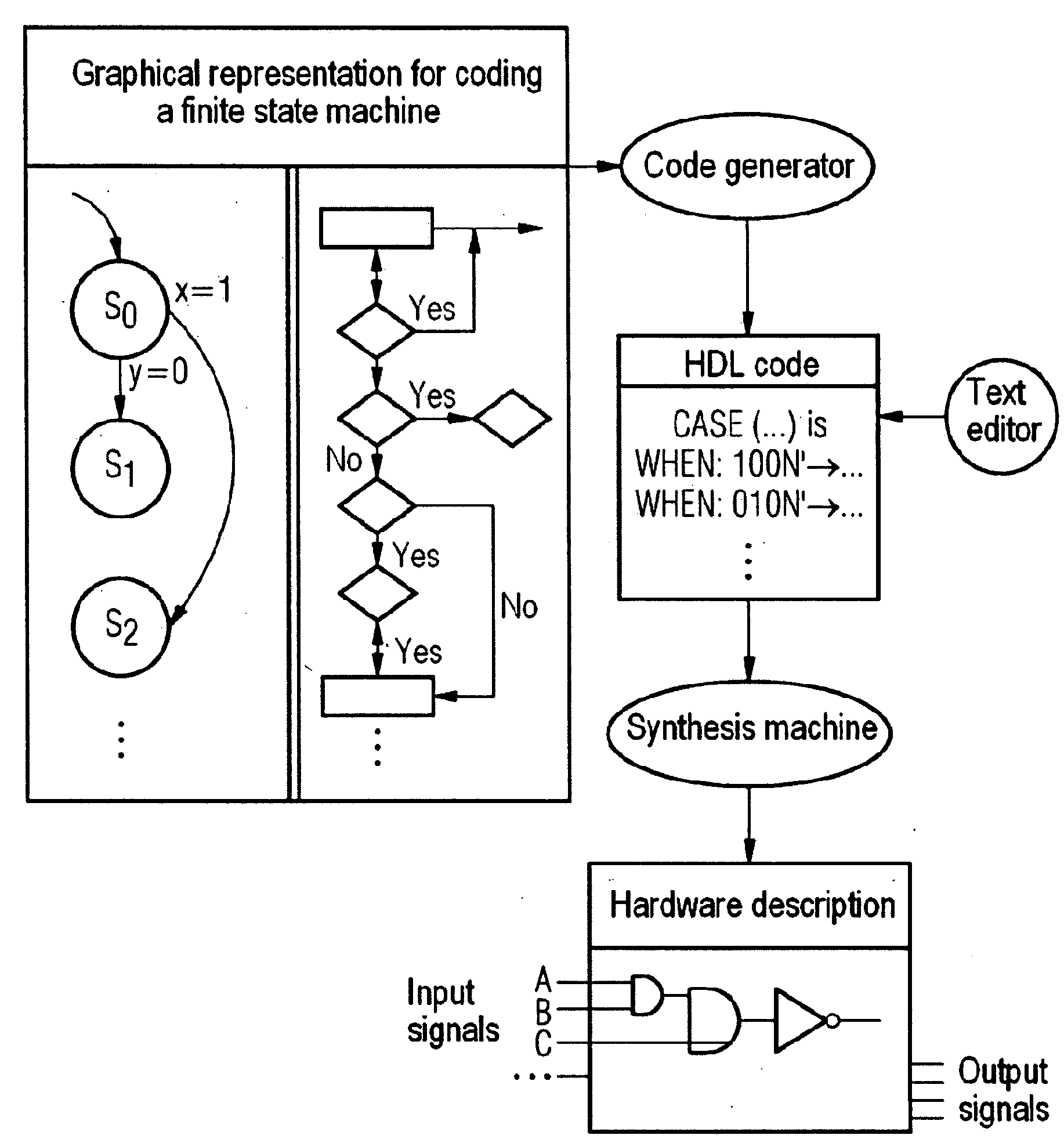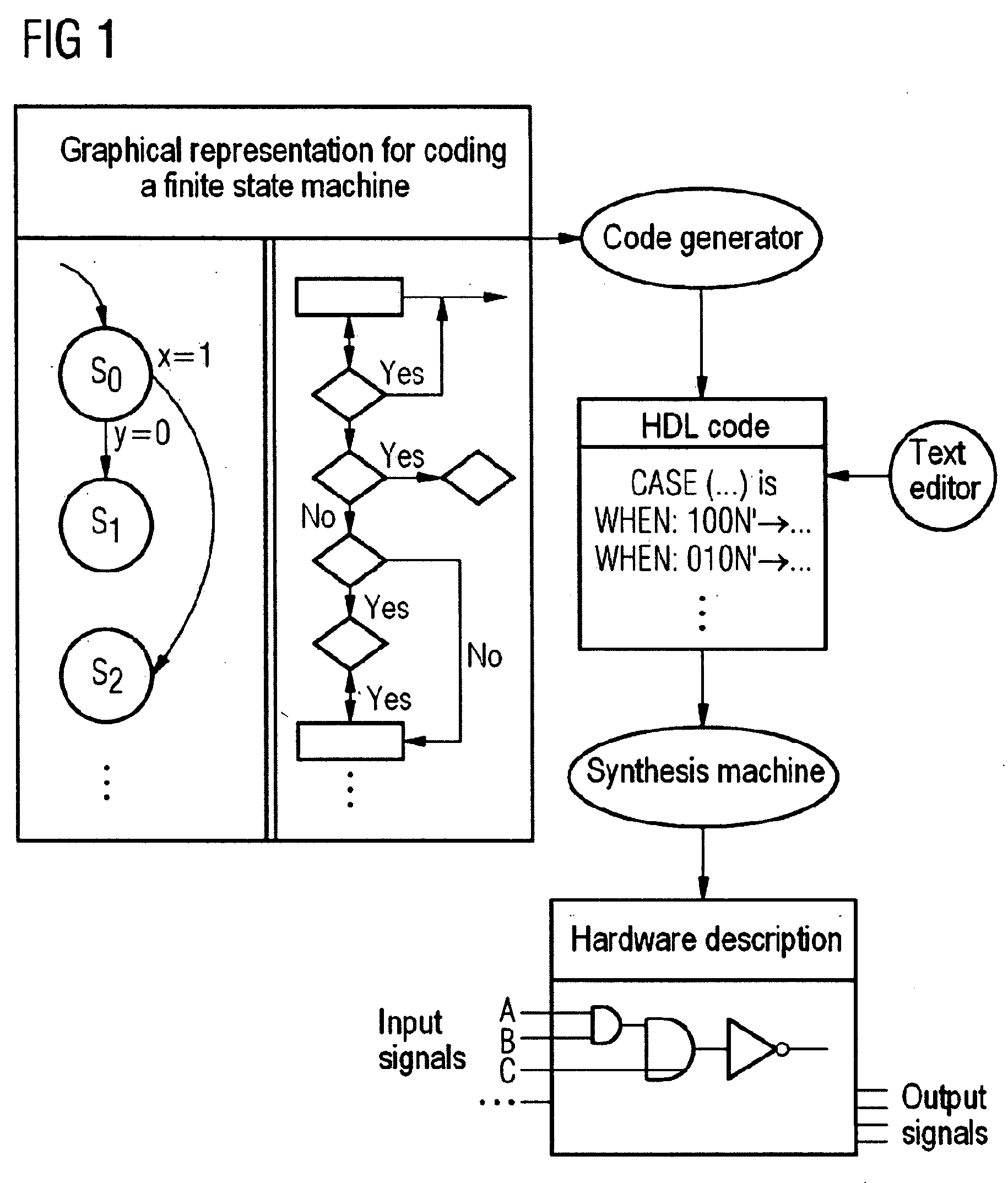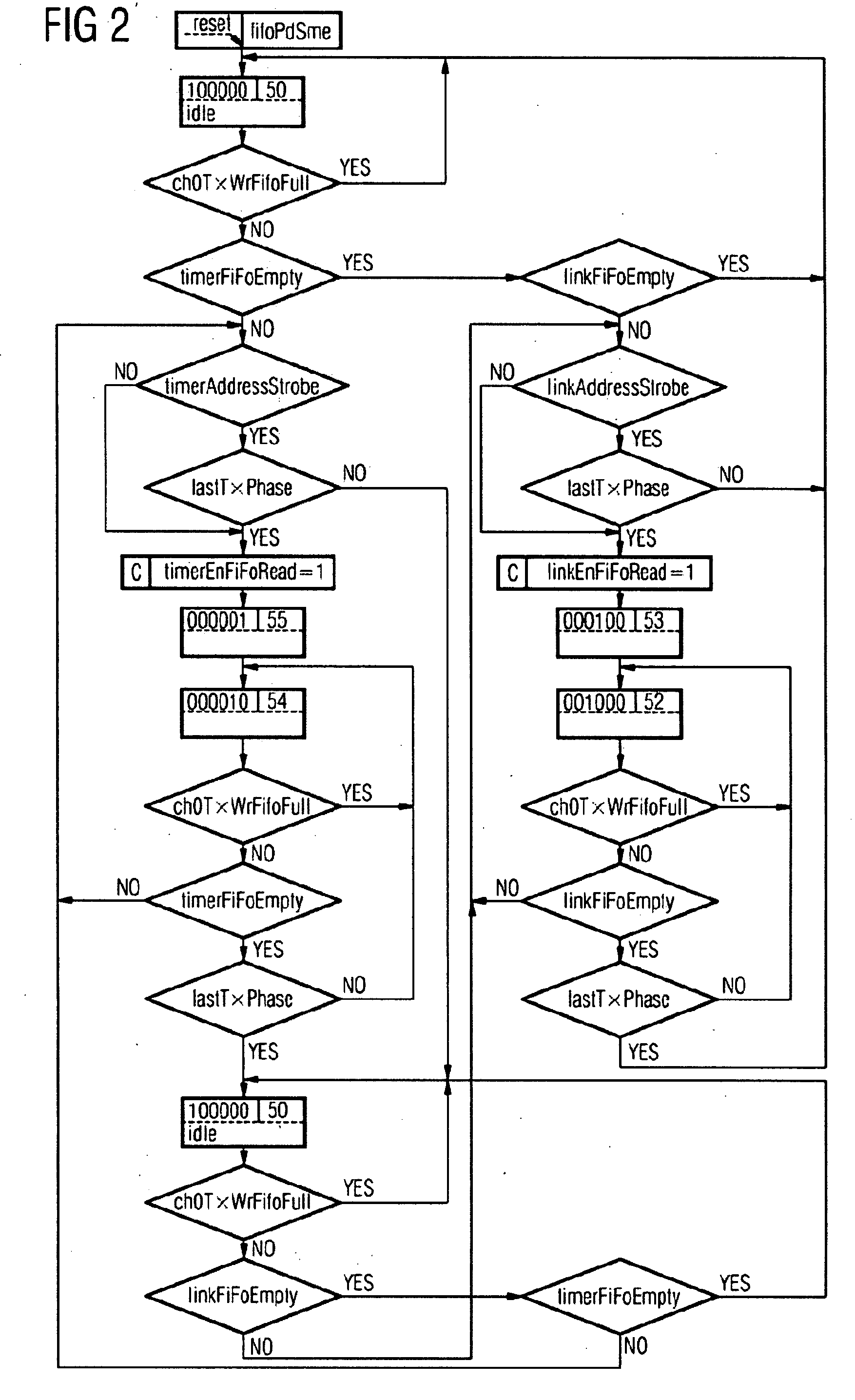Code generator for finite state machines
a code generator and finite state machine technology, applied in the field of code generators for finite state machines, can solve the problems of complex and time-consuming, unique and syntactically error-free code, and less convenient, and achieve the effect of improving the generated hardware cod
- Summary
- Abstract
- Description
- Claims
- Application Information
AI Technical Summary
Benefits of technology
Problems solved by technology
Method used
Image
Examples
Embodiment Construction
[0036]In the following the basic environment of a code generator for generating hardware logic shall be described in connection with FIG. 1.
[0037]As represented in FIG. 1 by the round element on the right-hand side, it is possible to use a graphical description for coding what are referred to as finite state machines which describes the functional linking of input signals, states and output signals in a clearly structured way. This graphical representation is based on a permanently defined syntax. From this graphical representation a code generator now generates an HDL code, e.g. VHDL or Verilog code or similar.
[0038]As shown in FIG. 1, it is equally possible to generate the HDL code directly and by hand using a text editor.
[0039]After the generation of the HDL code, the latter is supplied to a synthesis tool which thereupon generates a description of the hardware logic.
[0040]An example of such a graphical representation for coding a finite state machine is shown in FIG. 2. The loze...
PUM
 Login to View More
Login to View More Abstract
Description
Claims
Application Information
 Login to View More
Login to View More - R&D
- Intellectual Property
- Life Sciences
- Materials
- Tech Scout
- Unparalleled Data Quality
- Higher Quality Content
- 60% Fewer Hallucinations
Browse by: Latest US Patents, China's latest patents, Technical Efficacy Thesaurus, Application Domain, Technology Topic, Popular Technical Reports.
© 2025 PatSnap. All rights reserved.Legal|Privacy policy|Modern Slavery Act Transparency Statement|Sitemap|About US| Contact US: help@patsnap.com



